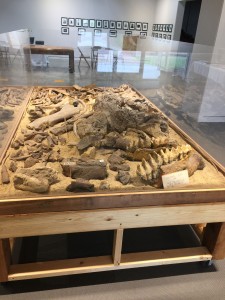As museum professionals, we all know the value and importance of our artifact collections. We spend an enormous amount of time and resources caring for, interpreting and exhibiting these priceless collections. A century or more ago when people from all around the country started collecting their community history everything was important. Now our shelves and storage facilities are filled to the brim with many items which no longer fit our missions. The long and arduous process of deaccessioning looms large in our long-range plans.
 As in the case of the Museum of the Mississippi Delta (formerly known as Cottonlandia Museum) L. B. Jones, an avid and extraordinary amateur archaeologist, felt it necessary to display almost every arrowhead (projectile point) and pot sherd he’d ever found. The Native American Gallery at the MoMD reminds me of visible storage.
As in the case of the Museum of the Mississippi Delta (formerly known as Cottonlandia Museum) L. B. Jones, an avid and extraordinary amateur archaeologist, felt it necessary to display almost every arrowhead (projectile point) and pot sherd he’d ever found. The Native American Gallery at the MoMD reminds me of visible storage.
Tucked back behind enormous cases filled with projectile points dating back to 10,000 BC in the form of Clovis points is a 12 x 6 ft. case housing the skeletal remains of a mastodon, excavated from the banks of the Yazoo River some 30 years ago. The jaw measures 22 inches in length and 14 inches wide. Those were a nice set of choppers.
Since the renovation of the MoMD is almost complete, today we moved that massive case with the help of four strong men from our local utility company. Now the first thing visitors will see when they walk into the lobby and look straight ahead into our Transition Gallery is our friend the mastodon who walked the earth at least 12,000 years ago. And here’s the interesting part. The volunteer at the front desk asked me where we had been hiding the mastodon, a question I was not expecting to hear. Hiding the mastodon? Seriously? It just goes to show you what moving an artifact can do for you!



